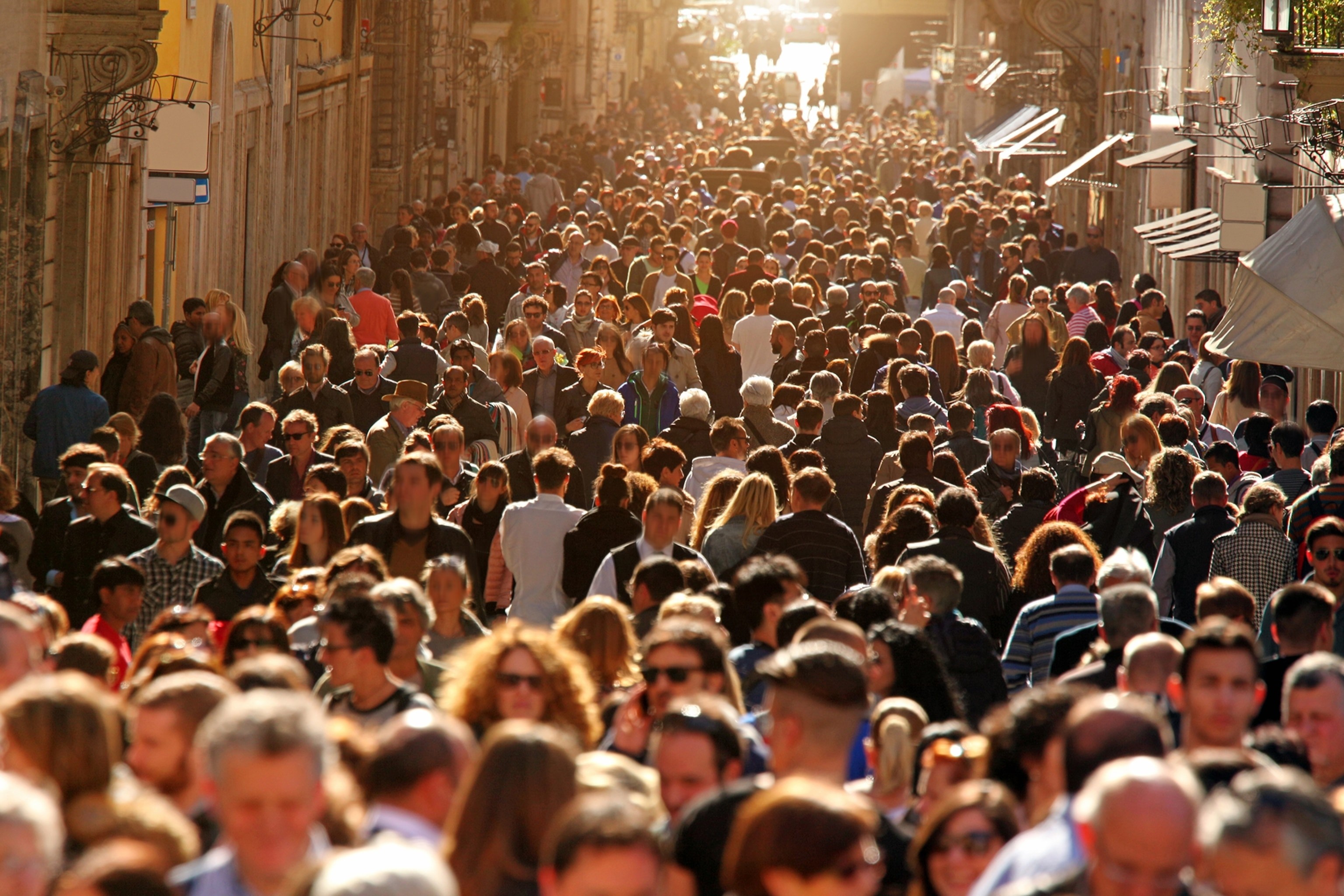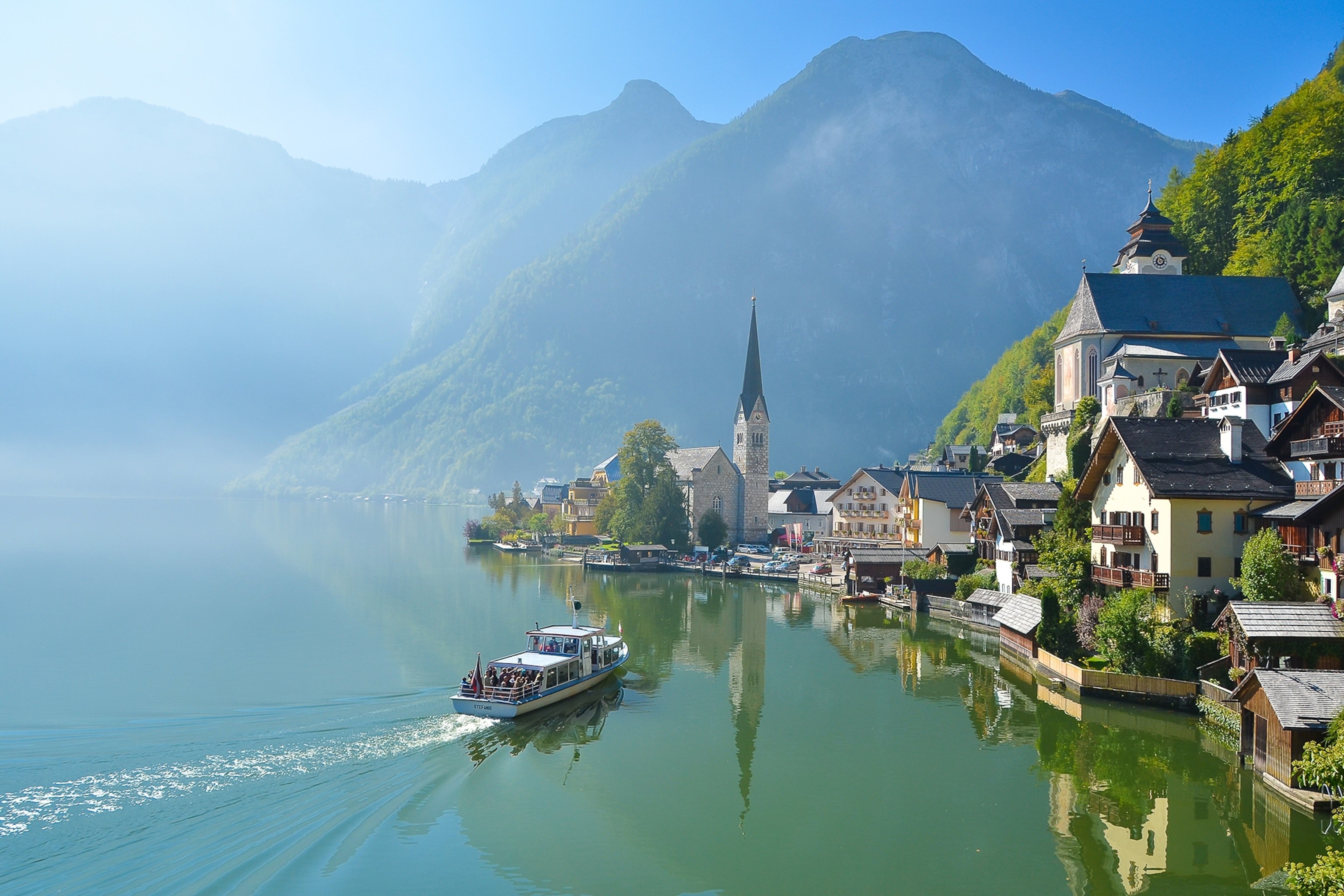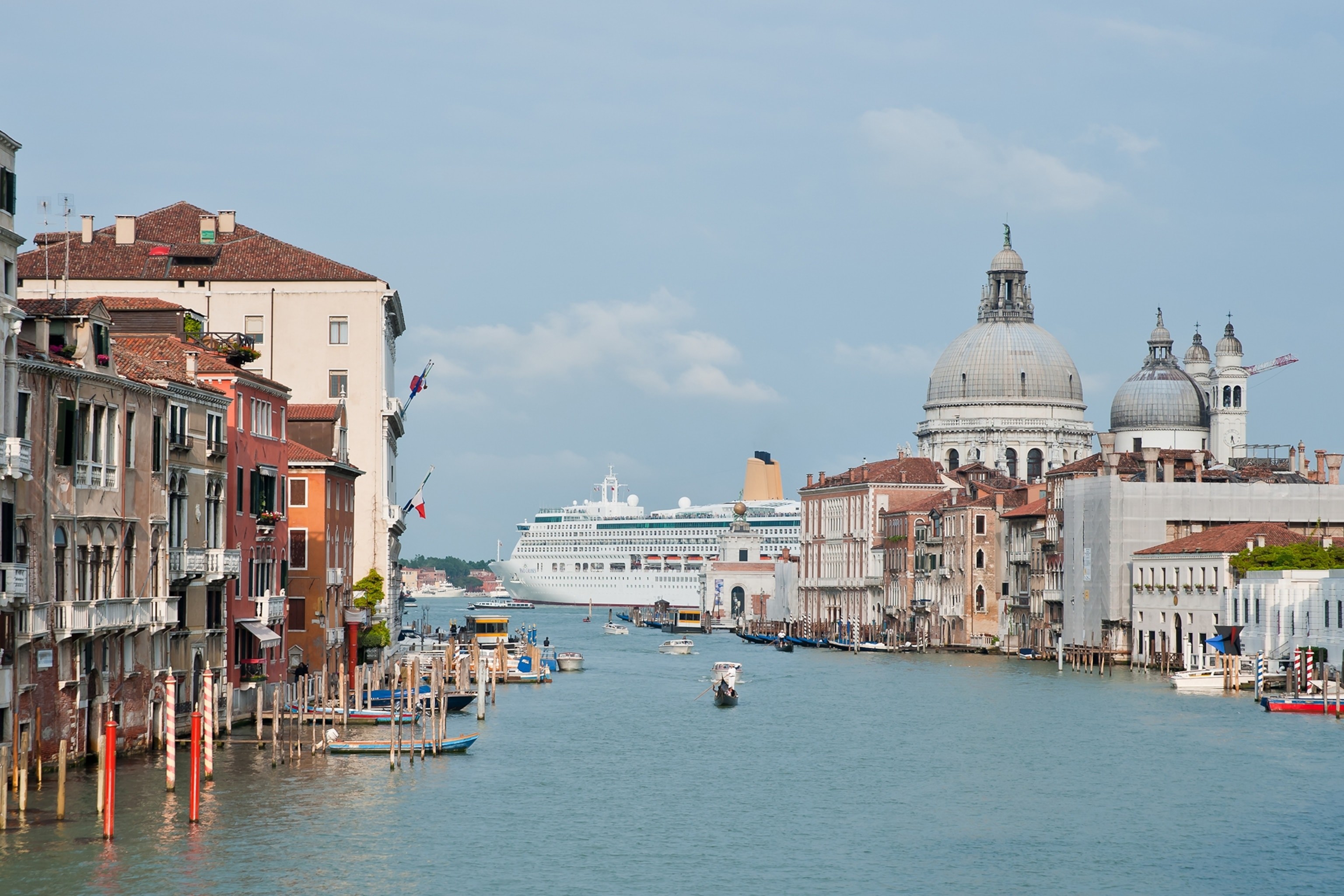Excessive Tourism, also known as overtourism, can indeed negatively impact your travel experience in Vietnam, leading to crowded attractions and increased prices, especially in popular destinations. SIXT.VN offers tailored travel solutions, including personalized itineraries and reliable transportation, ensuring a seamless and authentic exploration of Vietnam’s hidden gems. With our expert guidance, you can navigate the tourist hotspots and discover the true essence of Vietnam. Let us help you sidestep the overtourism traps and enjoy a more enriching and sustainable visit. Discover Vietnam responsibly by exploring alternative destinations, supporting local businesses, and traveling during the off-season.
1. What Exactly Is Excessive Tourism (Overtourism)?
Excessive tourism, or overtourism, refers to the situation where the number of tourists visiting a destination exceeds its carrying capacity, negatively impacting the environment, local communities, and the quality of the visitor experience. It’s about more than just crowded streets; it’s about the unsustainable strain on resources, infrastructure, and cultural heritage. According to the United Nations World Tourism Organization (UNWTO), sustainable tourism development requires the informed participation of all relevant stakeholders, as well as strong political leadership to ensure wide participation and consensus building. Overtourism can manifest in various ways, including overcrowded attractions, inflated prices, damage to natural environments, and displacement of local residents due to increased housing costs.
To fully grasp the concept, consider these key aspects:
- Environmental Impact: Increased pollution, waste generation, and damage to natural habitats.
- Social Impact: Displacement of residents, loss of cultural authenticity, and increased strain on local infrastructure.
- Economic Impact: While tourism can bring revenue, overtourism can lead to inflated prices that locals can’t afford and a dependence on a single industry, making the community vulnerable to economic downturns.
- Visitor Experience: Overcrowding diminishes the quality of the travel experience, leading to long queues, difficulty in accessing attractions, and a sense of being overwhelmed.
 Crowded Halstatt Austria Village Hallstatt
Crowded Halstatt Austria Village Hallstatt
2. What Are the Main Problems Caused by Overtourism?
The primary issues stemming from overtourism affect both tourists and locals, degrading the overall travel experience and quality of life. For travelers, overtourism often translates to long lines, inflated prices, difficulty booking accommodations, and a less authentic cultural experience. For residents, it can lead to increased living costs, overcrowded public spaces, environmental degradation, and a loss of community identity. Responsible Travel CEO Justin Francis notes that the lack of local consultation exacerbates these issues.
Here’s a breakdown of the significant problems:
- Crowding: Overcrowding at popular sites leads to longer wait times, diminished enjoyment, and damage to historical landmarks.
- Environmental Degradation: Increased pollution, waste, and damage to natural environments, such as beaches and coral reefs.
- Strain on Infrastructure: Local infrastructure, including transportation, water, and sanitation systems, becomes overwhelmed.
- Increased Costs: Prices for accommodations, food, and transportation rise, making it more expensive for both tourists and locals.
- Loss of Authenticity: Commercialization and homogenization of local culture to cater to tourists, leading to a loss of authenticity.
- Displacement of Residents: Rising housing costs and rents force locals to move out, disrupting communities.
- Noise Pollution: Increased noise levels from traffic, construction, and tourist activities disrupt the peace and quiet of residential areas.
3. Which Destinations Are Most Affected by Excessive Tourism?
Several destinations worldwide are grappling with the challenges of overtourism. These locations often share characteristics such as historical significance, natural beauty, and popularity on social media. In Europe, cities like Venice, Barcelona, and Amsterdam have implemented measures to manage visitor numbers. In Asia, destinations like Kyoto and Bali face similar pressures. Even smaller villages, like Hallstatt in Austria, have struggled with the influx of tourists.
Here are some specific examples:
- Venice, Italy: Known for its canals and historic architecture, Venice has struggled with the impact of cruise ships and day-trippers.
- Barcelona, Spain: Popular for its beaches and cultural attractions, Barcelona has faced protests from residents concerned about rising rents and overcrowding.
- Amsterdam, Netherlands: Famous for its canals and liberal culture, Amsterdam has taken measures to discourage certain types of tourists and promote more sustainable tourism.
- Kyoto, Japan: Renowned for its temples and traditional gardens, Kyoto has experienced a surge in tourism, particularly during peak seasons.
- Bali, Indonesia: Known for its beaches and spiritual retreats, Bali has faced environmental challenges due to overtourism, including waste management and water scarcity.
- Hallstatt, Austria: This small village became a popular tourist destination after appearing in a Korean drama, leading to overcrowding and concerns from residents.
 Scenic Hallstätter See, Dachstein Mountains and the town itself in Hallstatt Austria
Scenic Hallstätter See, Dachstein Mountains and the town itself in Hallstatt Austria
4. What Actions Are Being Taken to Combat Excessive Tourism?
To mitigate the negative impacts of overtourism, various strategies are being implemented globally. These range from regulatory measures to promote responsible travel practices. Cities like Amsterdam have banned cruise ships, while others, like Barcelona and Venice, have introduced tourist taxes. In Kenya’s Maasai Mara, authorities are imposing fines for off-roading and increasing park fees. The UNWTO emphasizes the importance of integrated planning and management of tourism at the national and local levels, including diversification of tourism products and markets, promotion of sustainable transport, and investment in infrastructure.
Here are some specific measures being taken:
- Tourist Taxes: Implementing taxes on overnight stays or day trips to generate revenue for infrastructure improvements and community projects.
- Visitor Caps: Limiting the number of visitors allowed at popular attractions or in certain areas.
- Time-Slot Systems: Requiring visitors to book time slots for popular attractions to manage crowds and prevent overcrowding.
- Cruise Ship Restrictions: Banning or limiting the size and number of cruise ships allowed to dock in certain ports.
- Promoting Off-Season Travel: Encouraging visitors to travel during the off-season to reduce crowding during peak periods.
- Discouragement Campaigns: Launching campaigns to discourage certain types of tourists or behaviors that are deemed undesirable.
- Fines for Misbehavior: Imposing fines for activities such as sitting on historical monuments or littering.
5. What Are the Projections for the Future of Global Tourism and Overtourism?
The global tourism industry is projected to rebound strongly in the coming years, with the World Travel & Tourism Council estimating that the sector will reach £7.5 trillion this year, nearing pre-pandemic levels. However, this growth also raises concerns about the potential for increased overtourism. According to a Booking.com survey, a significant percentage of travelers are willing to avoid popular tourist sites to reduce congestion. This indicates a growing awareness of the need for sustainable travel practices and a willingness to explore alternative destinations.
Key forecasts and trends include:
- Continued Growth: The number of international tourists is expected to continue to rise, putting more pressure on popular destinations.
- Increased Sustainability Awareness: More travelers are becoming aware of the environmental and social impacts of tourism and are seeking more sustainable options.
- Technological Innovations: Technology, such as mobile apps and data analytics, is being used to manage visitor flows and promote responsible travel practices.
- Shift to Alternative Destinations: Travelers are increasingly looking for off-the-beaten-path destinations and experiences to avoid crowds and discover new cultures.
- Focus on Local Experiences: There is a growing demand for authentic and immersive travel experiences that connect visitors with local communities and traditions.
6. What Are Some Potential Solutions to Excessive Tourism?
Addressing overtourism requires a multi-faceted approach that involves collaboration between governments, tourism operators, local communities, and travelers themselves. Limiting visitor numbers, promoting off-season travel, encouraging sustainable travel practices, and redirecting travelers to less-visited spots are all viable strategies. Emeritus Professor Harold Goodwin emphasizes the importance of understanding the causes of crowding and engaging with local communities to develop effective management strategies.
Here are some potential solutions:
- Promote Off-Season Travel: Encourage visitors to travel during the off-season by offering discounts and incentives.
- Limit Visitor Numbers: Implement visitor caps at popular attractions or in certain areas to prevent overcrowding.
- Encourage Sustainable Travel: Promote responsible travel practices, such as using public transportation, supporting local businesses, and respecting local culture and environment.
- Redirect Travelers: Encourage visitors to explore alternative, less-visited destinations and experiences.
- Engage Local Communities: Involve local communities in tourism planning and management to ensure that their needs and concerns are addressed.
- Educate Travelers: Provide travelers with information about the impacts of tourism and how they can travel more responsibly.
- Invest in Infrastructure: Invest in infrastructure improvements, such as transportation, water, and sanitation systems, to accommodate visitors without compromising the quality of life for local residents.
7. How Can Travelers Contribute to Sustainable Tourism in Vietnam?
As a traveler, you can play a vital role in promoting sustainable tourism in Vietnam by making conscious choices that minimize your impact on the environment and local communities. Opt for eco-friendly accommodations, support local businesses, respect cultural norms, and consider traveling during the off-season to avoid crowds. Booking accommodations and tours through SIXT.VN ensures you support local businesses and experience authentic Vietnamese culture.
Here are some specific actions you can take:
- Choose Eco-Friendly Accommodations: Look for hotels and guesthouses that have implemented sustainable practices, such as energy conservation, waste reduction, and water conservation.
- Support Local Businesses: Shop at local markets, eat at local restaurants, and purchase souvenirs from local artisans to support the local economy.
- Respect Cultural Norms: Learn about local customs and traditions and dress and behave appropriately.
- Use Public Transportation: Use public transportation, such as buses and trains, whenever possible to reduce your carbon footprint.
- Reduce Waste: Avoid single-use plastics, bring your own reusable water bottle and shopping bag, and dispose of waste properly.
- Conserve Water and Energy: Take shorter showers, turn off lights and air conditioning when you leave your room, and conserve water whenever possible.
- Participate in Community Projects: Volunteer your time or donate to local community projects that support environmental conservation or social development.
8. How Can SIXT.VN Help You Avoid the Pitfalls of Overtourism in Vietnam?
SIXT.VN specializes in crafting personalized travel experiences that take you beyond the typical tourist traps, allowing you to discover the hidden gems of Vietnam. Our expert travel consultants can recommend alternative destinations, off-the-beaten-path activities, and unique cultural experiences that will enrich your visit while minimizing your impact on over-touristed areas. With SIXT.VN, you can enjoy a more authentic and sustainable travel experience in Vietnam. We can arrange private transportation to remote locations, book accommodations in eco-friendly lodges, and connect you with local guides who can share their knowledge and insights.
Here are some specific ways SIXT.VN can help:
- Personalized Itineraries: We create customized itineraries that cater to your interests and preferences, while also avoiding crowded tourist spots.
- Alternative Destinations: We recommend less-visited destinations and attractions that offer unique experiences without the crowds.
- Sustainable Accommodations: We partner with eco-friendly hotels and guesthouses that prioritize sustainability and responsible tourism practices.
- Local Experiences: We connect you with local guides and communities to provide authentic and immersive cultural experiences.
- Private Transportation: We arrange private transportation to remote locations, allowing you to explore off-the-beaten-path destinations at your own pace.
- Responsible Travel Advice: We provide you with information and tips on how to travel responsibly and minimize your impact on the environment and local communities.
Address: 260 Cau Giay, Hanoi, Vietnam
Hotline/Whatsapp: +84 986 244 358
Website: SIXT.VN
9. What Are Some Underrated Destinations in Vietnam That Offer Authentic Experiences?
Vietnam is a country of immense beauty and cultural richness, with many hidden gems waiting to be discovered. While popular destinations like Hanoi and Ha Long Bay are undoubtedly worth visiting, exploring lesser-known regions can offer a more authentic and immersive travel experience. Consider visiting destinations like Phong Nha-Ke Bang National Park, a UNESCO World Heritage Site with stunning caves and jungle landscapes, or the Mekong Delta, a vibrant region known for its floating markets and lush rice paddies. According to the Vietnam National Administration of Tourism, promoting regional tourism and diversifying tourism products are key strategies for sustainable tourism development.
Here are some specific underrated destinations in Vietnam:
- Phong Nha-Ke Bang National Park: A UNESCO World Heritage Site with stunning caves, underground rivers, and lush jungle landscapes.
- Mekong Delta: A vibrant region known for its floating markets, rice paddies, and intricate canal systems.
- Sapa: A mountain town in northern Vietnam known for its stunning rice terraces, ethnic minority villages, and trekking opportunities.
- Ha Giang: A remote province in northern Vietnam with breathtaking mountain scenery, winding roads, and unique cultural experiences.
- Phu Quoc Island: A tropical island off the coast of Vietnam with beautiful beaches, clear waters, and a relaxed atmosphere.
- Con Dao Islands: A group of islands off the coast of southern Vietnam with pristine beaches, coral reefs, and a rich history.
 Giudecca Canal Venice Large cruise ships
Giudecca Canal Venice Large cruise ships
10. How Can You Plan a Trip to Vietnam That Minimizes Your Impact on Overtourism?
Planning a trip to Vietnam that minimizes your impact on overtourism requires careful consideration and a commitment to responsible travel practices. Start by researching alternative destinations and experiences, and book accommodations and tours through local, sustainable providers like SIXT.VN. Consider traveling during the off-season, and be mindful of your consumption habits, supporting local businesses and reducing waste. According to a report by the Asian Development Bank, promoting sustainable tourism in Vietnam requires a coordinated approach that involves government, businesses, and communities.
Here are some practical tips for planning a responsible trip to Vietnam:
- Research Alternative Destinations: Explore less-visited regions and attractions that offer unique experiences without the crowds.
- Book Sustainable Accommodations: Choose eco-friendly hotels and guesthouses that prioritize sustainability and responsible tourism practices.
- Support Local Businesses: Shop at local markets, eat at local restaurants, and purchase souvenirs from local artisans to support the local economy.
- Travel During the Off-Season: Consider traveling during the off-season to avoid crowds and take advantage of lower prices.
- Be Mindful of Your Consumption Habits: Reduce waste, conserve water and energy, and avoid single-use plastics.
- Respect Local Culture: Learn about local customs and traditions and dress and behave appropriately.
- Engage with Local Communities: Connect with local people, learn about their culture, and support their livelihoods.
Ready to explore Vietnam responsibly? Contact SIXT.VN today to plan your sustainable adventure!
FAQ about Excessive Tourism in Vietnam
1. What exactly is excessive tourism, and why is it a problem?
Excessive tourism, or overtourism, occurs when too many tourists visit a destination, straining its resources and negatively impacting the environment, local communities, and the quality of the visitor experience.
2. Which destinations in Vietnam are most affected by overtourism?
Popular destinations like Hanoi, Ha Long Bay, and Hoi An are often crowded, especially during peak seasons, leading to overcrowding and other negative impacts.
3. What are some of the negative impacts of overtourism on local communities in Vietnam?
Overtourism can lead to increased living costs, displacement of residents, loss of cultural authenticity, and strain on local infrastructure, disrupting communities and livelihoods.
4. How can I, as a traveler, contribute to sustainable tourism in Vietnam?
You can contribute by choosing eco-friendly accommodations, supporting local businesses, respecting cultural norms, using public transportation, reducing waste, and conserving resources.
5. What are some underrated destinations in Vietnam that offer authentic experiences?
Consider visiting Phong Nha-Ke Bang National Park, the Mekong Delta, Sapa, Ha Giang, Phu Quoc Island, or the Con Dao Islands for more authentic experiences.
6. How can SIXT.VN help me plan a responsible trip to Vietnam and avoid contributing to overtourism?
SIXT.VN specializes in crafting personalized travel experiences that take you beyond the typical tourist traps, offering alternative destinations, off-the-beaten-path activities, and unique cultural experiences.
7. What are some of the strategies being implemented to combat overtourism in Vietnam?
Strategies include promoting off-season travel, limiting visitor numbers, encouraging sustainable travel practices, and redirecting travelers to less-visited spots.
8. What role does technology play in managing overtourism in Vietnam?
Technology, such as mobile apps and data analytics, is being used to manage visitor flows, provide real-time information, and promote responsible travel practices.
9. What are the projections for the future of tourism in Vietnam, and how might overtourism be addressed?
The tourism industry is projected to continue growing, so addressing overtourism requires a multi-faceted approach that involves collaboration between governments, tourism operators, local communities, and travelers themselves.
10. What are some practical tips for planning a trip to Vietnam that minimizes my impact on overtourism?
Research alternative destinations, book sustainable accommodations, support local businesses, travel during the off-season, be mindful of your consumption habits, and respect local culture.



